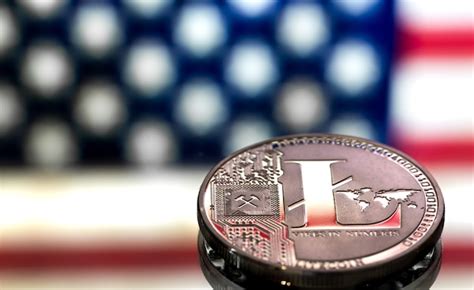The Securities and Exchange Commission (SEC) plays a crucial role in maintaining the integrity of financial markets by enforcing regulations and investigating potential violations. This article delves into the SEC’s regulatory role, providing a historical context and examining some of the most notable investigations that have shaped the financial landscape. Through detailed case studies of the Enron scandal, Bernie Madoff’s Ponzi scheme, Tesla and Elon Musk’s tweets, and the Theranos fraud, we explore the investigation process, legal implications, and the consequences for the entities involved. Finally, we discuss preventive measures for companies and predict future trends in SEC investigations.
Delve into this topic with alijyun.com to gain a thorough understanding.
1. Overview of the SEC and its Regulatory Role
The Securities and Exchange Commission (SEC), the primary regulatory authority in the United States, oversees the securities industry and enforces federal securities laws. Created in 1934, the SEC emerged in the wake of the 1929 stock market crash and the subsequent Great Depression. Its mission was to restore investor confidence by fostering transparency, fairness, and accountability within the financial markets.
The Securities and Exchange Commission (SEC) plays a critical role in regulating the U.S. financial markets. Its responsibilities encompass overseeing the operations of securities exchanges, brokers, and dealers. Additionally, the SEC ensures that publicly traded companies provide investors with accurate and timely information. This includes monitoring corporate reporting, investigating insider trading, and taking action against fraudulent activities that could compromise investor protection or market integrity. By enforcing compliance with securities laws, the SEC aims to safeguard investors, promote capital formation, and maintain efficient and orderly markets. With its broad authority to initiate investigations, pursue enforcement actions, and impose penalties, the SEC serves as a cornerstone of U.S. financial regulation.

2. Historical Context and Notable SEC Investigations
Established in 1934 amidst the financial turmoil following the stock market crash of 1929 and the Great Depression, the Securities and Exchange Commission (SEC) emerged as a pivotal force in financial regulation. The SEC’s creation was a direct response to widespread abuses and fraud that had plagued the securities markets during that era. Empowered by federal securities laws, the SEC was tasked with enforcing these laws and safeguarding investors from fraudulent practices.
The Securities and Exchange Commission (SEC) has a long history of leading significant investigations that have reshaped the financial landscape. From the Enron scandal, which exposed massive corporate fraud and resulted in the collapse of a major American corporation, to the Bernie Madoff Ponzi scheme, one of the largest financial frauds ever recorded, the SEC has been at the forefront of exposing financial wrongdoing. In more recent times, the SEC has investigated Tesla and Elon Musk’s controversial tweets, raising concerns about market manipulation, and the Theranos fraud case, which revealed deceptive practices within a Silicon Valley startup. These cases underscore the SEC’s crucial role in preserving market integrity.

3. Key Components of an SEC Investigation Process
SEC investigations often start when suspicious activities or potential violations are detected. These issues might be brought to the agency’s attention by whistleblowers, market surveillance, or routine audits. After a potential issue is identified, the SEC will initiate a preliminary inquiry to evaluate the credibility of the allegations.
A formal investigation is initiated if preliminary findings suggest further action is necessary. This grants the SEC the power to subpoena documents, take sworn testimonies, and require cooperation from relevant individuals. The investigation centers around gathering evidence, analyzing financial records, and interviewing witnesses to ascertain whether securities laws have been broken.
The SEC prioritizes confidentiality throughout its investigations, safeguarding the integrity of the process and the reputations of those involved. If sufficient evidence of wrongdoing is discovered, the SEC may initiate civil enforcement action or refer the case to the Department of Justice for potential criminal prosecution. This ensures accountability for violators and serves as a deterrent against future misconduct.

4. Case Study 1: Enron Scandal
The Enron scandal stands as one of the most notorious examples of corporate fraud, exposing deep flaws in corporate governance and financial oversight. Enron Corporation, a former energy giant, engaged in extensive accounting fraud, employing intricate financial structures and off-balance-sheet entities to conceal its substantial debt and exaggerate its profits. This deceitful scheme was orchestrated by the company’s leadership and abetted by the complicity of its accounting firm, Arthur Andersen.
In 2001, following Enron’s dramatic collapse and the decimation of billions in shareholder value, the Securities and Exchange Commission (SEC) launched an investigation. The probe uncovered a pattern of years-long financial statement manipulation by Enron, designed to deceive investors and regulators. This scandal exposed widespread corruption and conflicts of interest, culminating in indictments against top executives, including CEO Jeffrey Skilling and Chairman Kenneth Lay.
The Enron scandal’s repercussions were widespread, not only resulting in the demise of Arthur Andersen but also triggering substantial regulatory reform. The most notable consequence was the Sarbanes-Oxley Act of 2002, which imposed strict standards for corporate financial reporting and accountability. The Enron case serves as a poignant reminder of the critical need for transparency, ethical leadership, and robust regulatory oversight to prevent corporate misconduct.
5. Case Study 2: Bernie Madoff Ponzi Scheme
The Bernie Madoff Ponzi scheme, one of history’s most devastating and extensive financial frauds, defrauded investors of an estimated $65 billion. Orchestrated over decades by Bernie Madoff, a respected financier and former chairman of the NASDAQ stock exchange, the scheme promised investors consistently high returns through his wealth management business. However, the reality was far different. Madoff used funds from new investors to pay returns to earlier investors, creating the deceptive appearance of a successful investment portfolio.
The SEC had received multiple warnings about Madoff’s activities over the years, but the true extent of the fraud was not uncovered until 2008, when Madoff confessed to his sons that his business was a massive Ponzi scheme. They reported him to federal authorities, leading to his arrest and the subsequent SEC investigation.
An investigation into Bernard Madoff’s Ponzi scheme revealed systemic shortcomings within the Securities and Exchange Commission (SEC). These included the overlooking of warning signs and insufficient follow-up on reliable tips. Madoff’s elaborate fraud ultimately collapsed during the 2008 financial crisis when he could no longer secure enough new investments to cover his promised returns. The scandal sparked widespread criticism of regulatory oversight and triggered substantial reforms within the SEC aimed at enhancing its ability to detect and prevent fraud. Madoff was sentenced to 150 years in prison, a stark reminder of the severe consequences that accompany fraudulent activities.
6. Case Study 3: Tesla and Elon Musk’s Tweets
The SEC’s investigation into Tesla and its CEO Elon Musk highlights the growing concern over social media’s influence on financial markets. In August 2018, Musk posted a tweet stating he was considering taking Tesla private at $420 per share, claiming he had “funding secured.” This tweet led to substantial fluctuations in Tesla’s stock price, prompting the SEC to launch an investigation into the veracity of Musk’s statements and their compliance with securities regulations.
The SEC investigation centered on whether Musk’s tweet constituted securities fraud by misinforming investors about the proposed deal’s feasibility. It was concluded that Musk had not secured the funding he claimed to have, and his tweet lacked the required factual support. Consequently, the SEC filed a lawsuit against Musk, alleging that his false and misleading statements caused harm to investors.
The case reached a resolution in September 2018. As part of the settlement, Musk agreed to relinquish his position as Tesla’s chairman for a minimum of three years and to pay a $20 million fine. Additionally, Tesla committed to implementing enhanced controls and procedures to monitor Musk’s communication, particularly on social media platforms. This case underscores the escalating significance of regulatory oversight in the era of digital communication and underscores the potential legal consequences stemming from executive statements made on platforms like Twitter.
7. Case Study 4: Theranos Fraud Case
The Theranos fraud case stands as a stark example of deception within the biotechnology sector, highlighting the crucial need for transparency and accuracy in medical innovation. Founded by Elizabeth Holmes, Theranos promised a groundbreaking blood-testing technology capable of performing numerous tests with minimal blood. These bold claims, coupled with Holmes’s charismatic leadership, captivated investors and fostered partnerships, propelling the company to remarkable heights.
In 2015, investigative reporting by John Carreyrou of The Wall Street Journal brought to light serious doubts about the reliability and accuracy of Theranos’s technology. This led to an investigation by the Securities and Exchange Commission (SEC), which uncovered evidence that the company had deceived investors, doctors, and patients regarding the capabilities and accuracy of its tests.
In 2018, the Securities and Exchange Commission (SEC) filed charges against Elizabeth Holmes, former CEO of Theranos, and Ramesh “Sunny” Balwani, the company’s former president, alleging fraud. The charges accused them of orchestrating a complex plan to mislead investors and patients regarding the capabilities of Theranos’ technology. Holmes was found guilty of defrauding investors in 2021, while Balwani was convicted on multiple counts. The Theranos case highlights the critical need for robust oversight and transparent communication within the healthcare and technology sectors to safeguard against similar deceptive practices.
8. Legal Implications and Consequences of SEC Investigations
SEC investigations carry substantial legal weight, impacting both individuals and companies. When the SEC identifies violations of securities laws, it has the authority to implement various enforcement actions. These actions can range from civil penalties and fines to restrictions on business operations and mandated changes in corporate governance for companies. Individuals may face significant financial penalties, the forfeiture of illegally obtained profits, and even permanent bans from holding leadership positions within public companies.
Beyond monetary sanctions, SEC investigations can inflict significant reputational harm, affecting a company’s market valuation and investor confidence. High-profile instances like Enron and Theranos exemplify the severity of such consequences, leading to long-term damage to a company’s brand and operational integrity.
Furthermore, SEC investigations can spur broader regulatory adjustments and reforms to prevent future wrongdoing. Examples of legislative responses fueled by prominent SEC cases include the Sarbanes-Oxley Act and alterations in disclosure requirements. Individuals convicted of securities fraud may face repercussions beyond civil penalties, such as criminal charges and imprisonment, as illustrated by the Bernie Madoff Ponzi scheme case. The SEC’s actions highlight the critical significance of ethical behavior and compliance in the financial industry.
alijyun.com

